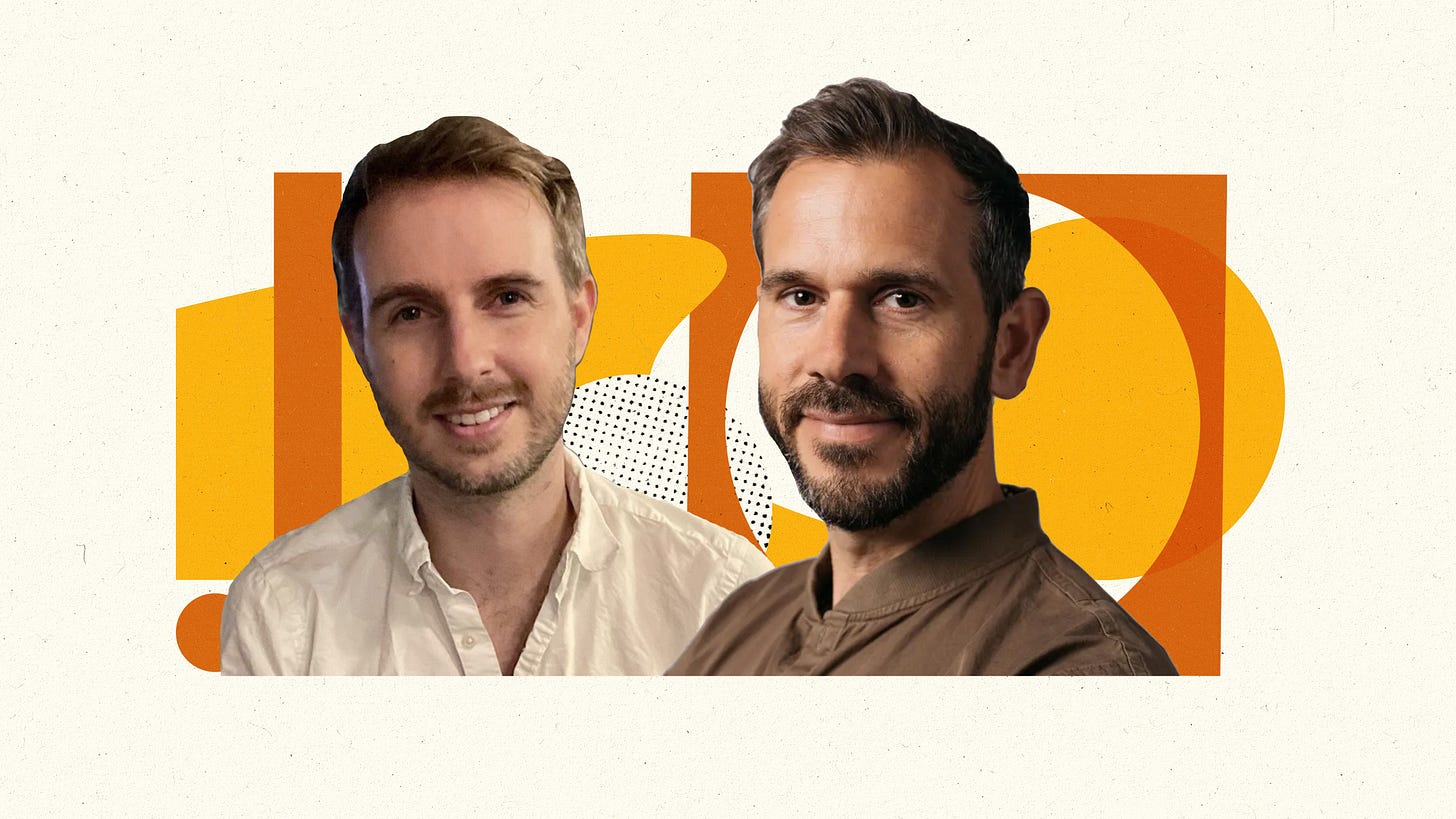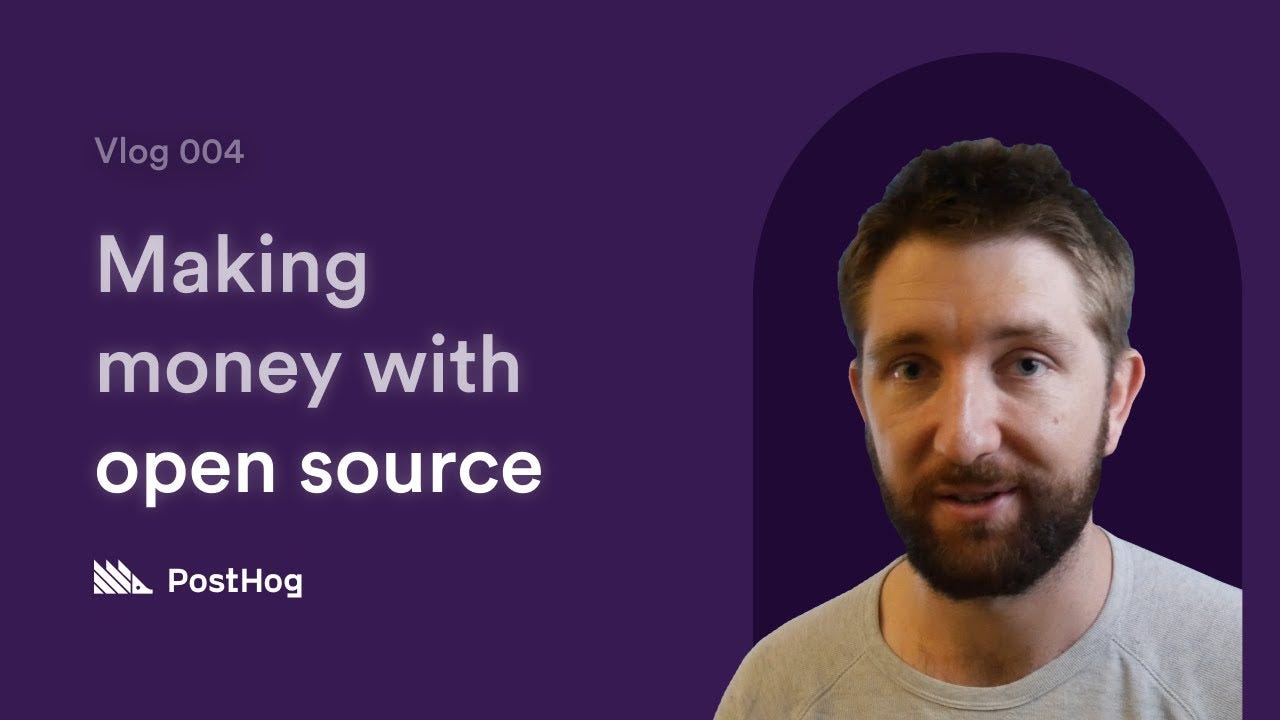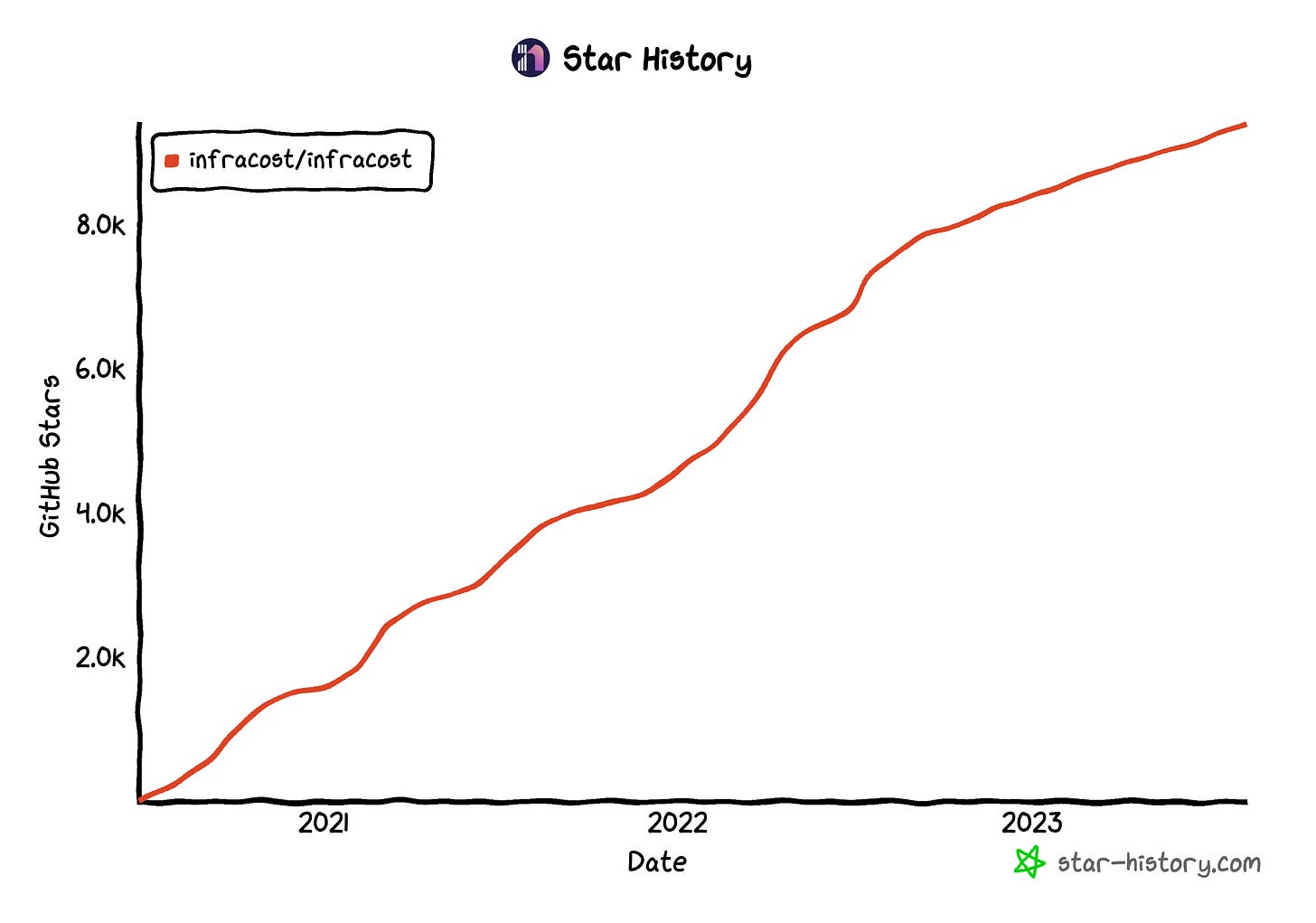DevTools Brew #23: Supabase Journey: Community-Led Growth & Open-Source Approach, How PostHog Monetized Their Open Source Product, How Pulumi Launched an OS Project & Company at the Same Time...
Dear friends, welcome to DevTools Brew #23!
If you're new here, my name is Morgan Perry, co-founder of Qovery, and every Saturday I share a roundup of the stories, strategies, and insights behind the successful devtool companies.
In this Issue #23:
📈 Supabase Journey: Community-Led Growth & Open-Source Approach
💻 How PostHog Monetized Their Open Source Product
⭐ Star History Weekly Pick
🎙️ How Pulumi Launched an OS Project & Company at the Same Time
I hope you will enjoy this new edition.
Let's dive in!
📈 Supabase Journey: Community-Led Growth & Open-Source Approach
Supabase, the open-source alternative to Google Firebase, is making waves in the developer community. Started by Paul Copplestone and Anthony Wilson, Supabase provides a comprehensive set of backend services, including databases, storage, authentication, and APIs. With a community-led approach and open-source model, Supabase is challenging industry giants and growing rapidly. Let’s uncover the Supabase journey!

Key Highlights
Supabase - An Open-Source Alternative
Fun Fact: Supabase’s name was inspired by Nicki Minaj's hit single, but it is far from a frivolous project. It competes with Google Firebase and offers similar infrastructures for web application development.
The platform provides various services like authentication, storage, databases, and soon, functions, all accessible through a user-friendly dashboard.
Supabase leverages PostgreSQL (Postgres), an advanced open-source relational database system, as the backbone of its platform, making it a powerful and reliable choice for developers.
From YC to $36 Million in Funding
Supabase's origins trace back to Paul Copplestone's experience with Nimbus, where a system created on Github caught Anthony Wilson's attention, leading to the birth of Supabase.
They secured acceptance into YCombinator (YC) in 2020, gaining essential mentorship and support for their project.
An unexpected viral post on Hacker News brought an influx of alpha users and feature requests, prompting them to close their seed funding round after YC's demo day in August 2020.
Within a year of their seed round, they raised a staggering $30 million in Series A funding.
The Launch Week Idea
Supabase adopted a unique approach with a "launch week" instead of a single launch day. This involved releasing new features and improvements throughout the week to maintain momentum and engagement.
This strategy proved highly successful, leading to a surge in signups, community contributions, and brand recognition.
Supabase's launch weeks became a core part of their culture, ensuring steady and continuous progress.
Building a Strong Community
Github serves as the primary hub for Supabase's community, with over 54,000 stars and 4,300 forks. It facilitates discussions, issue resolution, and contributions to open-source projects.
The Discord channel, with over 17,000 members, offers a more casual and interactive platform for developers to engage with the Supabase team and other community members.
The Supasquad advocate program empowers community members to play an active role in managing and shaping Supabase's future. Members can participate as Maintainers, Experts, Advocates, Builders, Authors, and Moderators, earning various benefits and privileges.
Documentation and Swag Store
Supabase's comprehensive documentation provides detailed guides for working with backend services and integrating with various applications like Appsmith, Vercel, Auth0, and Prisma.
The launch of the Supabase Swag store in 2021 rewarded community contributors and supporters with exclusive merchandise, further fostering a sense of belonging and appreciation.
Building a Company Community
Supabase actively engages with the DEV community, a network of over 800,000 developers, by sharing updates and conducting hackathons.
Their accidental viral launch on Hacker News, one of the most upvoted dev tool launches ever, catapulted them into the spotlight and ignited widespread community support.
The company's continued growth and success can be attributed to their strong relationship with the developer community, shaping an open-source product that addresses developers' needs and desires.
Supabase's community-led approach and open-source model have propelled its growth, positioning it as a formidable contender against Google Firebase. By nurturing an active and engaged community, adopting innovative launch strategies, and staying transparent with its users, Supabase is revolutionizing the world of developer tools.
—> To explore more, read the full article “Supabase's community-led approach that's taking on Google Firebase” published by Priyanshu Anand.
💻 How PostHog Monetized Their Open Source Product
Thrilled to share how PostHog has monetized its product and explore three other business models you can consider for your own venture.
Key Highlights
Building a Community
Foster a welcoming and supportive community around your open-source project. Engage users, contributors, and developers to create a sense of belonging and shared purpose.
Create spaces for interaction, such as forums, Slack channels, or Discord servers, where users can ask questions, share ideas, and offer feedback.
Organize events like hackathons or community meetups to encourage collaboration and knowledge-sharing among community members.
Acknowledge and celebrate top contributors to recognize their efforts and encourage continued engagement.
Option #1: Support Model
Offer support services to enterprise clients who require assistance with deploying, maintaining, and upgrading your open-source software.
Tailor support packages to meet different companies' specific needs and challenges, providing them with a personalized experience.
Use your expertise and knowledge of the software to address complex issues, saving clients valuable time and resources.
The support model can generate a steady revenue stream, especially if you establish long-term contracts with enterprise clients.
Option #2: Hosted vs. Self-Hosted
Provide a hosted version of your open-source software for users who prefer a hassle-free experience. Handle infrastructure management, updates, and maintenance on their behalf.
Offer a self-hosted option for users who want more control over their data and infrastructure, allowing them to deploy the software on their servers.
Consider offering additional value-added services or features for the hosted version to incentivize users to choose this option.
Be aware of potential competition from third-party hosting providers who might capitalize on your free edition and offer premium services.
Option #3: Open Core Model
Maintain two editions of your product: a fully open-source version and a 'source-available' edition with proprietary features designed for larger businesses.
Keep the core functionalities open-source to encourage community adoption and contributions while offering exclusive features to paying customers.
This approach can attract enterprise clients who value data privacy and want control over their software stack.
Consider setting clear boundaries between the open-source and source-available editions to avoid confusion among contributors.
Option #4: Donations:
Accept donations from individuals or companies who appreciate your open-source product's value to the community.
Leverage platforms like Patreon or Open Collective to facilitate donation collections and show transparency in how the funds are used.
While donations might not fully sustain your team, they can cover essential expenses or fund specific project improvements.
It's essential to strike a balance between donations and other revenue streams to ensure long-term financial stability.
Choose the Right Approach
Carefully evaluate each monetization option based on your project's goals, community size, and funding requirements.
Consider the long-term implications of your chosen business model, including its scalability, sustainability, and alignment with your mission.
Be open to experimentation and adaptation. As your community grows and user needs evolve, you might need to adjust your monetization strategy accordingly.
Ultimately, prioritize building a remarkable product and nurturing an engaged community, as these elements are fundamental to the success of any open-source venture.
—> Check out the full article on the PostHog blog.
⭐ Star History Weekly Pick
The Star History Weekly Pick is:
Infracost: “Cloud cost estimates for Terraform in pull requests”
⭐️ 9.4k stars reached
🎙️ How Pulumi Launched an OS Project & Company at the Same Time
With Joe Duffy, Founder & CEO, Pulumi
1:17: Background on Joe & Pulumi - the company was started to give infra engineers tools to help them innovate faster.
3:05: Why OS as a core part of Pulumi’s strategy - getting community buy-in was important as it created trust and authenticity. Joe also saw the power of open source when he was at Microsoft and they started exploring an OS strategy.
5:29: Pulumi launched as a company and OS project at the same time. The benefit of this was they could be thoughtful about the business model from the get-go instead of it being an afterthought.
9:53: The SaaS attach rate was insanely high - 2/3 adopted the SaaS. It was the default experience that developers opted out of if they wanted to. The business model was close to what AWS offers - a full managed service.
12:13: Finding product-market fit with the OS project and business at the same time was tricky. It took over a year to release the OS project, however, they had their first paying customer before they open-sourced anything.
14:28: They decided to charge for enterprise features only (identity, policy enforcement, webhooks, team management, etc.).
20:25: When measuring the health of the open-source, they focused on engagement over growth metrics. They wanted end users to be really successful. Joe continues to be baffled about investor conversations that center on stars - it’s one light measure of momentum but there are much stronger signals around health from Stack Overflow, Hacker News, Reddit, etc.
25:20: Joe took on the role of the developer advocate himself early on. In fact, he did parts of every function before hiring for them to make sure he understood all parts of the business.
26:53: In raising money for an OS company, focusing on typical SaaS metrics as well as OS metrics is important. Both need to be worked on in tandem.
28:55: Early on, the focus was on building the OS community over the SaaS product. The ratio was 10:1 for people working on the OS vs. SaaS.
31:10: Advice Joe has for OS founders - don’t sweat monetization too soon as once it’s introduced it averts focus away from top of funnel OS growth.
33:05: Joe wishes investors understood developers more. They’re a tough group to make happy and the tech changes rapidly. It’s not just about momentum metrics but solving big problems for the community (TensorFlow is a good example).
35:08: Joe’s final piece of advice is focus on making developers happy and starting in a niche vs. making a solution too broad at the start.
—> Full episode here
It’s already over! If you have any comments or feedback, you can reach out to me on LinkedIn or Twitter.
Thanks for reading,
Morgan
Please share DevTools Brew with your friends, and subscribe






